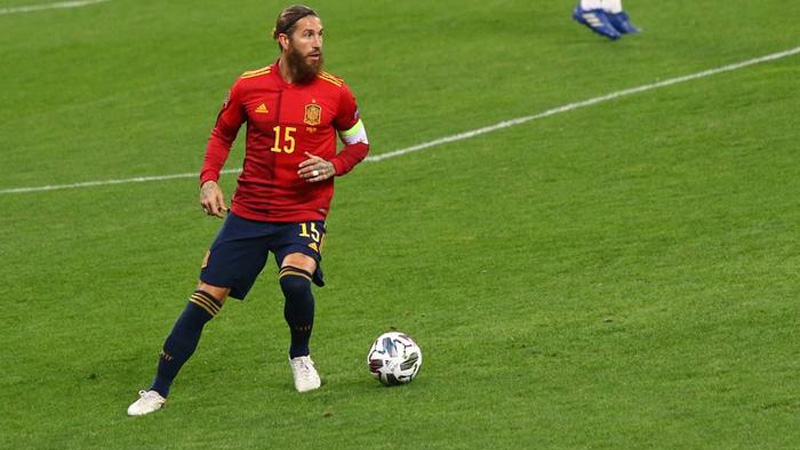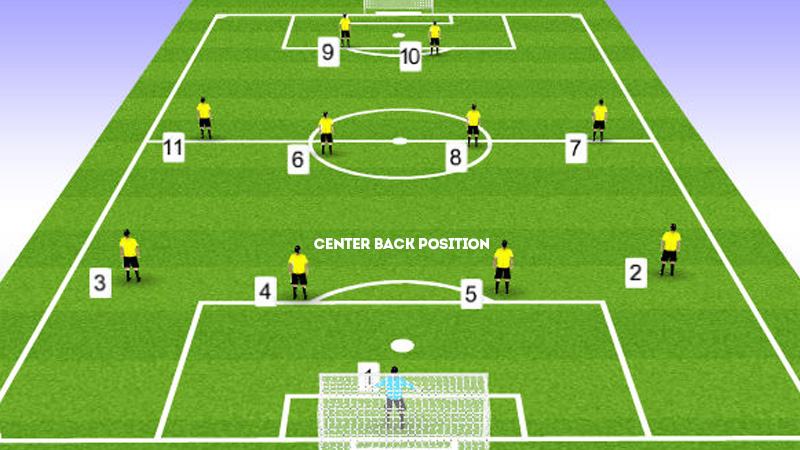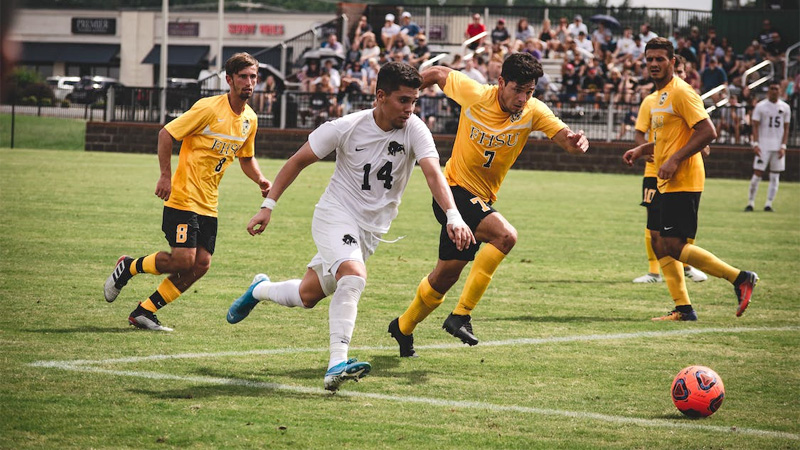The center back position is one of the most important positions in soccer. The center backs are the last line of defense, responsible for preventing the opposing team from scoring goals.
They must be strong, athletic, and have good positioning skills. They must also be able to read the game and anticipate the opponent’s moves.
In addition to their defensive duties, center backs are also often involved in the team’s build-up play. They must be able to pass the ball accurately and effectively, both short and long. They may also be called upon to dribble the ball out of danger or start an attack.
The center back position is a demanding one, but it is also a very rewarding one. Center backs are often the unsung heroes of the team, but they are essential to the team’s success. Let’s dive in and explore the definition and key responsibilities of a center back.
What Is A Soccer Center Back Position?
In soccer, a center back, also known as a central defender or a center-half, is a position in the defensive line of a team. The center back typically plays in the central area of the field, just in front of the goalkeeper.
Their primary role is to provide defensive stability and prevent the opposing team from scoring goals.
Center backs are responsible for marking and challenging opposing forwards, intercepting passes, and clearing the ball away from their team’s goal.
They are often the tallest and strongest players on the team, as they need to win aerial duels and physical battles with opposing attackers.
Center backs also play a crucial role in organizing the defense, communicating with their teammates, and maintaining the team’s defensive shape. They are often involved in initiating attacks by distributing the ball to their teammates and starting build-up play from the back.
Some notable center backs in soccer history include Franco Baresi, Franz Beckenbauer, Fabio Cannavaro, and Sergio Ramos.
How Important Is A Soccer Center Back?

Source: jobsinfootball
A soccer center back, also known as a central defender, plays a crucial role in the team’s defensive structure and overall success.
Their importance stems from their position on the field, their responsibilities, and the impact they have on the team’s performance. Here’s a long and detailed explanation of why a soccer center back is important:
Defensive Organization
The center back is responsible for organizing and leading the defensive line. They communicate with their teammates, instructing them on positioning, marking opponents, and coordinating defensive strategies.
Their ability to read the game, anticipate opponents’ movements, and make quick decisions is vital in maintaining a solid defensive structure.
Marking and Tackling
Center backs are often tasked with marking the opposing team’s strikers or attacking midfielders. They need to be physically strong, agile, and possess excellent tackling skills to win duels and regain possession.
Their ability to time tackles effectively and dispossess opponents can prevent dangerous scoring opportunities and disrupt the opposition’s attacking play.
Aerial Dominance
Center backs are typically tall and possess good heading ability. They play a crucial role in defending set-pieces, such as corners and free kicks, where opponents often aim to exploit their height advantage.
Center backs need to be able to win aerial duels, clear the ball effectively, and provide an additional attacking threat during offensive set-pieces.
Ball Distribution
In modern soccer, center backs are not just defensive-minded players; they are also expected to contribute to the team’s build-up play. They act as the first line of attack, initiating attacks from the back by distributing the ball to the midfielders or wide players.
Center backs with good passing ability and vision can help their team maintain possession, create attacking opportunities, and break through the opposition’s defensive lines.
Leadership and Communication
Center backs are often considered the leaders of the defensive unit. They need to be vocal, assertive, and capable of organizing their teammates effectively.
Their ability to communicate instructions, provide guidance, and maintain a calm and composed demeanor under pressure is crucial in ensuring defensive solidarity and cohesion.
Covering and Sweeping
Center backs are responsible for covering their defensive partners, and providing support when they are beaten by opponents. They need to possess good recovery speed and positional awareness to close down spaces, intercept passes, and make last-ditch tackles.
Their ability to read the game and anticipate potential threats can prevent dangerous situations from developing and provide an extra layer of protection for the team.
Psychological Impact
A strong and reliable center back can have a significant psychological impact on both their teammates and opponents. Their presence and confidence can instill a sense of security and stability within the team, boosting morale and inspiring trust.
Additionally, opponents may think twice before attempting to challenge a dominant center back, altering their attacking strategies and reducing their effectiveness. A soccer center back is a vital component of a team’s defensive structure and overall success.
Their ability to organize the defense, mark opponents, win aerial duels, distribute the ball effectively, provide leadership, and make crucial defensive interventions can significantly impact the outcome of a match.
A skilled and influential center back can be the backbone of a team, providing stability, security, and a platform for attacking opportunities.
Center Back Positioning

Source: sportsessionplanner
Positioning is a critical aspect of a center back’s role in soccer. A well-positioned center back can effectively defend against opponents, anticipate their movements, and contribute to the team’s overall defensive organization. Here are some key points regarding center back positioning:
Defensive Line
Center backs typically form the central part of the defensive line, which also includes fullbacks on either side. The defensive line’s positioning is crucial to maintain a compact and organized defense.
Center backs need to ensure they are in line with their defensive partners, maintaining a suitable distance to cover spaces and prevent opponents from easily penetrating the defensive line.
Marking Opponents
Center backs are responsible for marking opposing players, particularly strikers or attacking midfielders. They need to position themselves in a way that allows them to closely track their assigned opponent, denying them space and limiting their influence on the game.
This involves maintaining a suitable distance to apply pressure, while also being mindful of potential runs or movements by the opponent.
Covering and Support
Center backs must be aware of their defensive partners’ positioning and movements. They need to provide cover and support when their teammates are beaten by opponents.
This involves positioning themselves in a way that allows them to quickly react and close down spaces, intercept passes, or make tackles to regain possession.
Zone Coverage
Center backs often employ a zonal marking system, where they are responsible for defending a specific area of the field rather than marking individual opponents.
This requires them to position themselves strategically to cover their designated zone effectively. They need to be aware of potential threats within their zone, such as opponents making runs or exploiting gaps in the defense.
Offside Trap
Center backs play a crucial role in implementing the offside trap strategy. By coordinating with their defensive partners, they can step forward in unison, catching opponents in an offside position.
This requires excellent timing, communication, and a clear understanding of the defensive line’s movements.
Ball Distribution
Center backs also need to position themselves to receive the ball from their teammates, particularly the goalkeeper or other defenders.
They should provide passing options and create angles to receive the ball in a secure position. This allows them to initiate attacks from the back and contribute to the team’s build-up play.
Communication and Awareness
Positioning is closely tied to communication and situational awareness. Center backs need to constantly assess the game, anticipate opponents’ movements, and communicate with their teammates to ensure everyone is in the right position.
They should provide instructions, organize the defensive line, and alert teammates to potential threats or opportunities.
In summary, center back positioning is crucial for maintaining a solid defensive structure, marking opponents effectively, providing cover and support, implementing defensive strategies, and contributing to the team’s overall defensive organization.
A well-positioned center back can anticipate and react to the game’s dynamics, making them an invaluable asset to the team’s defensive efforts.
How to Defend Against Center Backs?
Defending against center backs in soccer requires a strategic approach and an understanding of their strengths and weaknesses. Here are some key tactics and techniques to consider when facing center backs:
Exploit Their Lack of Pace
Center backs are typically not as fast or agile as wingers or forwards. One way to defend against them is to use quick and agile players to exploit their lack of pace.
By making runs behind or using quick changes of direction, attackers can create space and opportunities to penetrate the defense.
Target Their Weak Foot
Most center backs have a preferred foot for passing and clearing the ball. By positioning yourself to force them onto their weaker foot, you can limit their options and make it more difficult for them to distribute the ball effectively. This can lead to misplaced passes or turnovers in possession.
Exploit Their Aerial Weaknesses
While center backs are often strong in the air, some may have weaknesses in their aerial duels. By identifying these weaknesses and utilizing players who are strong in the air, you can challenge them in aerial battles and potentially create scoring opportunities from crosses or set pieces.
Create Overloads and Combination Play
Center backs are often responsible for marking specific players or areas of the field. By creating overloads in these areas or using combination play, you can draw their attention and create space for other attacking players to exploit. Quick passing and movement can disorient center backs and create gaps in the defense.
Test Their Decision-Making
Center backs are required to make split-second decisions in high-pressure situations. By varying your attacking movements, runs, and passing options, you can force them into making difficult decisions. This can lead to defensive errors or gaps in the defense that can be exploited.
Use Speed and Directness
Center backs may struggle to deal with fast and direct attacking play. Utilize players with speed and directness to run at them, take them on, and create one-on-one situations. This can put them under pressure and force them into making mistakes or committing fouls.
Study Their Playing Style
Each center back has its own playing style and tendencies. By studying their previous matches and performances, you can identify their strengths and weaknesses. This knowledge can help you develop a specific game plan to exploit their vulnerabilities and neutralize their strengths.
FAQs
What are the key attributes of a successful center back?
Successful center backs typically possess a combination of physical attributes, such as strength, height, and agility, as well as technical skills like tackling, heading, and passing.
How do center backs contribute to the team’s attacking play?
While their primary role is defensive, center backs can contribute to the team’s attacking play in several ways. They can initiate attacks from the back by distributing the ball to midfielders or wide players.
What is the role of a sweeper in a center back position?
A sweeper is a type of center back who plays a more withdrawn role, positioned behind the defensive line. Their primary responsibility is to “sweep up” any loose balls or potential threats that bypass the defensive line.
How do center backs communicate with their teammates during a match?
Communication is crucial for center backs to organize the defense effectively. They use verbal cues, hand signals, and body language to communicate with their teammates, instructing them on positioning, marking opponents, and coordinating defensive strategies.
Can center backs play in other positions on the field?
Yes, center backs can sometimes be deployed in other positions depending on the team’s tactical approach or specific circumstances. For example, they may be asked to play as fullbacks in a back four formation or as defensive midfielders in a more defensive-minded setup.
Bottom Line
The soccer center back position is a crucial role that requires a unique set of skills and attributes. Center backs are the backbone of a team’s defense, responsible for organizing the backline, intercepting passes, and making crucial tackles.
Their ability to read the game, anticipate the opponent’s moves, and communicate effectively with teammates is paramount.
A successful center back must possess physical strength, agility, and excellent positioning to neutralize the opposition’s attacking threats.
Additionally, their ability to initiate attacks from the back and distribute the ball with accuracy is becoming increasingly important in modern football. The center back position demands discipline, composure, and leadership qualities to inspire and guide the team.
Overall, the center back position is a vital cog in the soccer machine, playing a pivotal role in both defensive solidity and offensive contributions.







